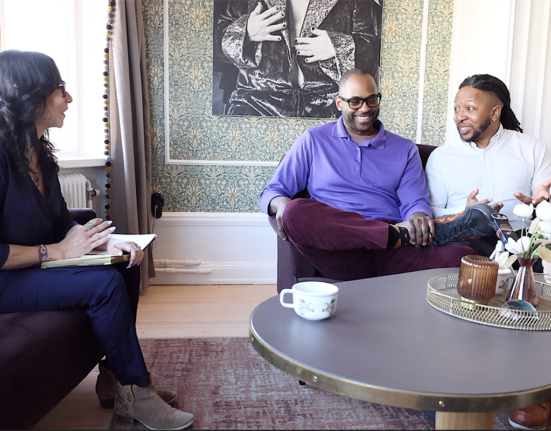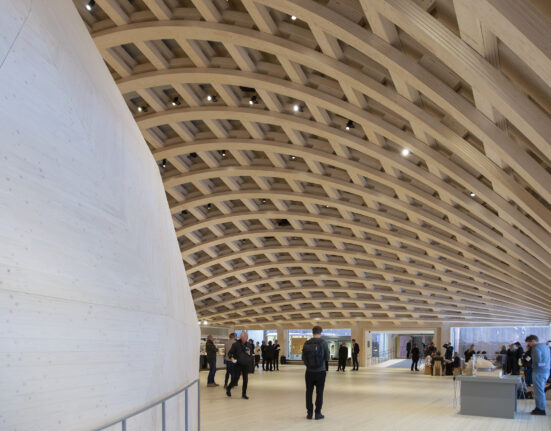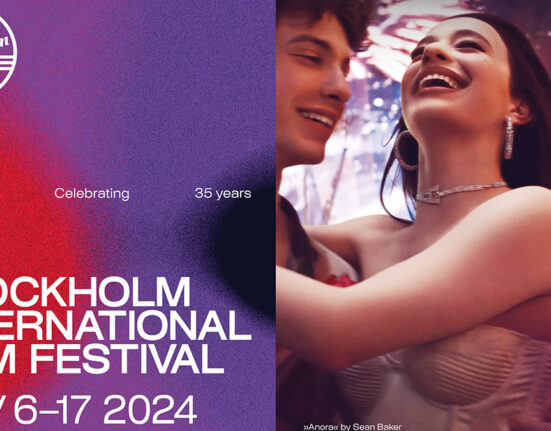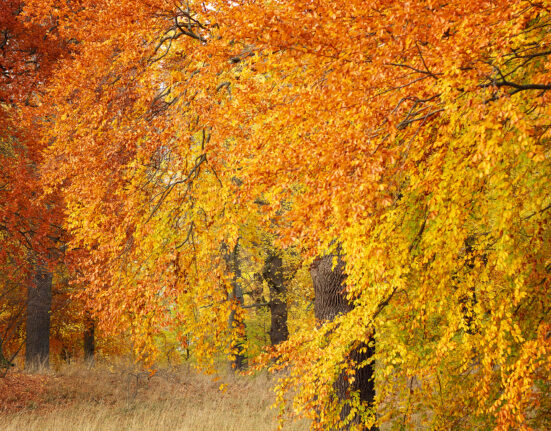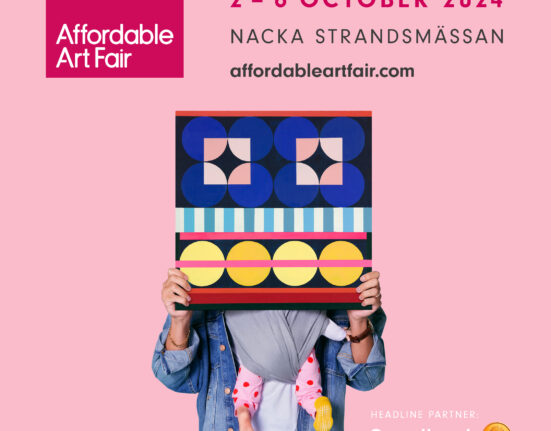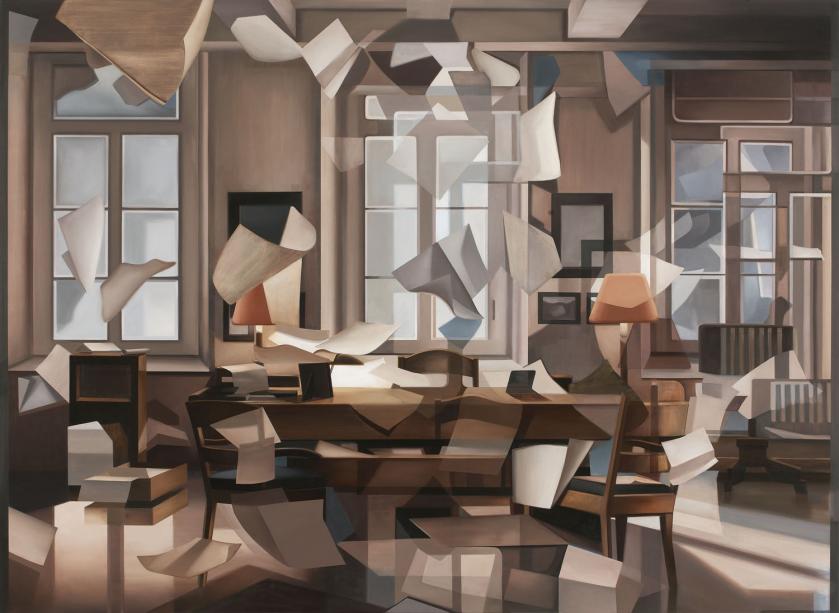
As art makers individualistically strive to create new possibilities, new forms, new twists, new perspectives, new futures; uncommon not thought of and even mysterious associations are either repetitively or uniquely explored, repositioned and recombined; shifting from a return to the familiar to an adventurous life rendered ever so foreign – all achieved without the slightest preconception in tow….
…and in turn raises the question of the value we place on a piece of art: Is it just artistic merit alone? Is it driven by the associations we place on it? Or does who created it matter as much?
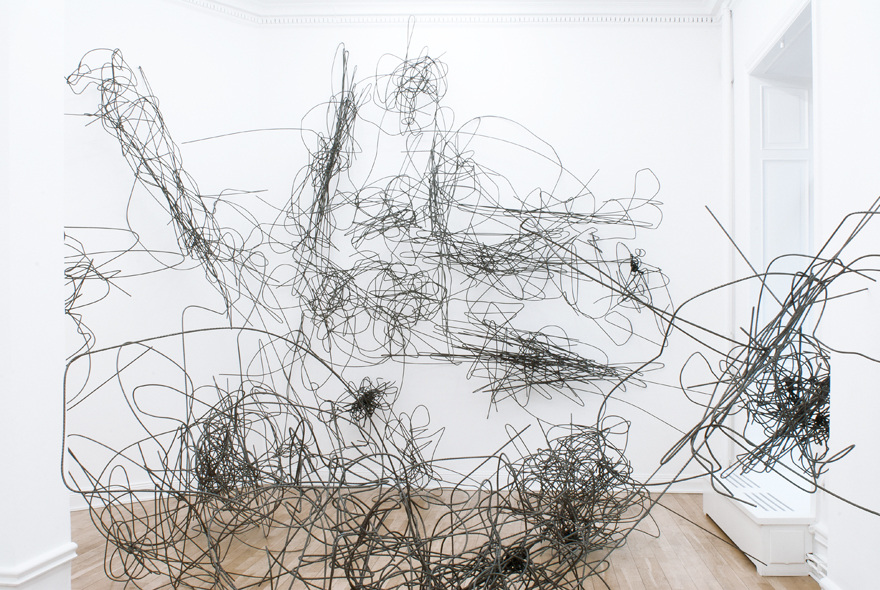
Artist & Exhibition: Leontine Arvidsson
Where: ANNAELLEGALLERY, Karlavägen 15 B
When: Till 9 April
Leontine Arvidsson‘s compositions are built by fragments of physical activity, of painting over failed attempts rather than erasing, demolishing or diminishing them, exploring new changes and new forms to develop emerging and coalescing layers.
Her exhibition with circumlocution shows cores of sculptures created by bending and twisting rebar to resemble sketches of pencil lines drawn in the air, which are then wrapped with thin cloth and lowered into a bath of crystals, with time, place, circumstances and interaction impacting the three-dimensional artworks’ final shape open to view as we move along.
Paintings on the same type of fabric hang freely in the room, with seemingly hastily painted brushstrokes of ink dashing across the diaphanous textile, creating moments of interference and convergence as we again move on.
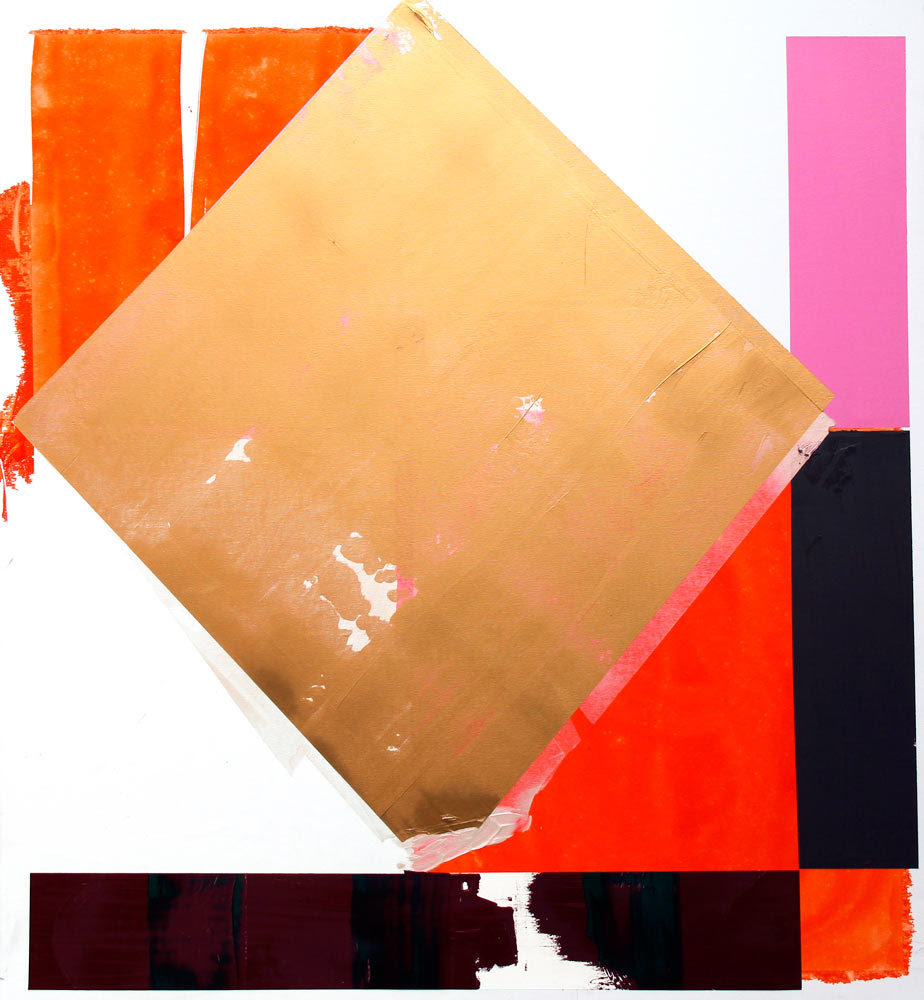
Artist: Marcus Eek
Exhibition: Carte Blanche
Where: Galleri Charlotte Lund, Johannes plan 5
When: Till 22 April
Since his debut in the late 1990s, Marcus Eek has alternated between figuration with abstract elements and total abstraction. He has now landed up in the latter, focusing on painting itself.
“For some time now, things have been transforming in my painting. I have let go of my previous uncertainty, perhaps. My inspiration now focuses on what I experience as the basics: light, material and balance. To give myself total freedom, I immerse myself shamelessly in abstract painting. I love abstract painting!” shares Eek.
Liberated from symbols and messages, he playfully mixes cubism with even freer brushwork, without compromising on the balance of the composition, while using a palette that spans from clear to muted, and is evenly distributed with consistent intensity. The distinct and apparently unflinching way in which he applies the paint produces paintings with a powerful individualism.
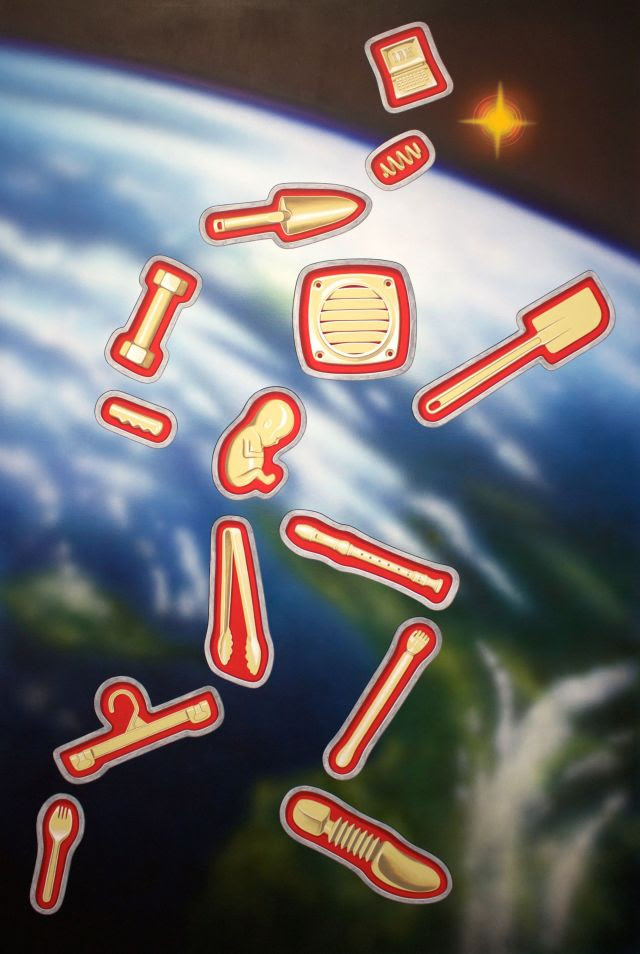
Artist: Henry Gunderson
Exhibition: Emancipation Affirmations
Where: LOYAL, Kammakargatan 68
When: Till 22 April
American Henry Gunderson’s exhibition presents us with a series of associations: there are traces of human anatomy, and objects interjected to function symbolically. Exceeding disjunction for its own sake, he hence invokes a disturbing concoction that embodies a powerful psychological value.
In “Spectator Sport” Gunderson alludes to the human obsession for the spectacle with an image of a blurred crowd in a stadium seating at a football game or a gladiator fight. But the relationship between the crowd and the subject of the painting – an unmanned factory machine rendered in sharp detail in the foreground – remains mysterious. Life seems to have stopped and become fixed in front of an imaginary obstacle.
Where free-association makes the mind join two words straight out of the unconscious, so might a painting contain several relational connotations, with a hyper pitch of varying images all sewn together into a tableau, or even of two versions of the same impression coming in the guise of a nostalgic childhood memory – the vinyl seating of a car, the plastic kitchen appliances, a board game; all given a mobile human appearance where anatomy is merged with technology.
Have we diminished our specialness as a species, focusing more and more on scientific discoveries that would make our past clearer and our future easier? Gunderson gives us the receptacles for this humanity.
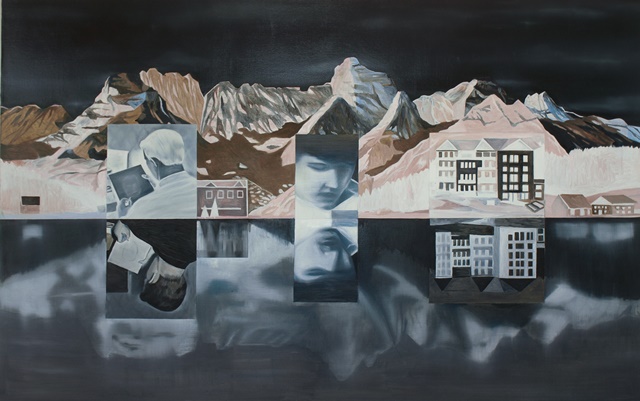
Artist: Annika Johansson
Exhibition: Reminiscence
Where: Domeij Gallery, Luntmakargatan 52
When: Till 15 April
In Annika Johansson’s imaginary world fragments of pictures are integrated from the private picture album, the history of art, and the patterns from popular culture; in a stage room in the shape of a landscape or an interior that borders beyond all logic while co-existing within the same pictorial.
Here is the abstract almost realistically carefully reproduced. As often as not the same picture is mulled over and over again – she stretches, twists and turns them until they fall into place.
The pictures or the images of old photos are reversed, athwart, upside down or inverted; with some objects frequently reoccurring; constructing other stories in new constellations – all alternatively twined into the vast romantic landscapes or into a picture on a wall in a room with falling plain floors.
The people in the pictures are mostly depicted from behind, looking inwards and back into paintings that are both dreamlike and surreal with sometimes muted undertones seriously reproduced in more humorous colours.
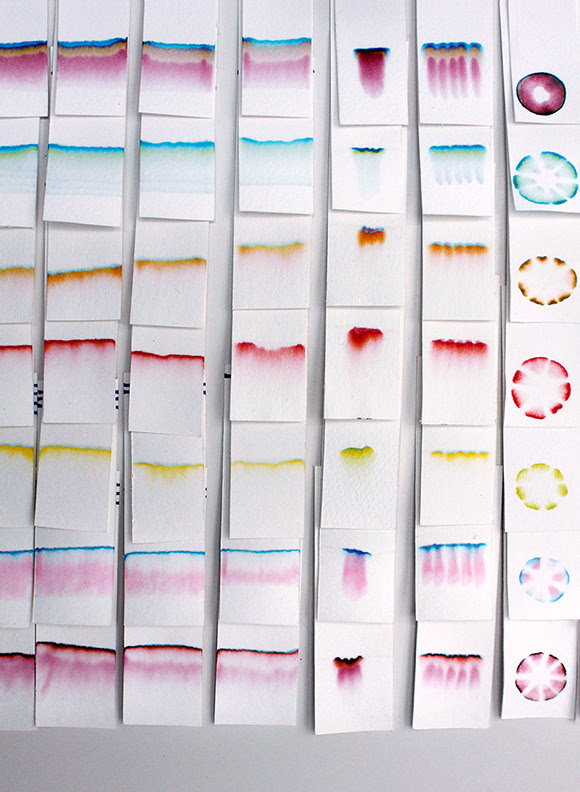
Artist: Vanessa Donoso-López
Exhibition: No Fixed Colour Continuum
Where: CandyLand, Gotlandsgatan 76
When: Till 2 April
“When living in a foreign land the limits of oral communication become more obvious than anywhere else. I often find myself rescuing unusual or invented words when I am unable to express my thoughts into the relatively limited English I have at my disposition. Perhaps odd attempts of expressing myself are, whilst probably incomprehensible, [are] somehow ‘unpolluted’ in form, although you will have to settle for an unsatisfactory wrong-word, which often holds misplaced and unintentional weight.
It is sad to think that you might only be enjoying a watered down version of the relationship you might be having if you were to share the same mother tongue(s). Or maybe it is this unadorned speech that is the more authentic: the one which comes when you have not yet learnt to manipulate the said language into the shape of appearance, lies, sarcasm or puzzle,” says Dublin-based Spaniard Vanessa Donoso-López.
“No Fixed Colour Continuum” represents this constant misconception leading to an often feeling of displacement, forcing us to look back at how life used to be or would be like back home. Yet cross-cultural interaction begins and ends with difference: new places, new behaviour, even new language. It may seem that the inherent variability of cross-cultural interaction and biculturalism prevents any patterns or generalisations from being established. What is established however, is not a universal model or fixed pattern, but a universal motion of balancing between two cultures, being near and far, being different and accepted.
The displacement of the individual to an unknown geographic space, as a deliberated act of placing oneself in an alien context, becomes a journey not only spatial but vital. It transforms the traveler into the fundamental protagonist facing a challenge that often gets initiated with the acceptation of loneliness.
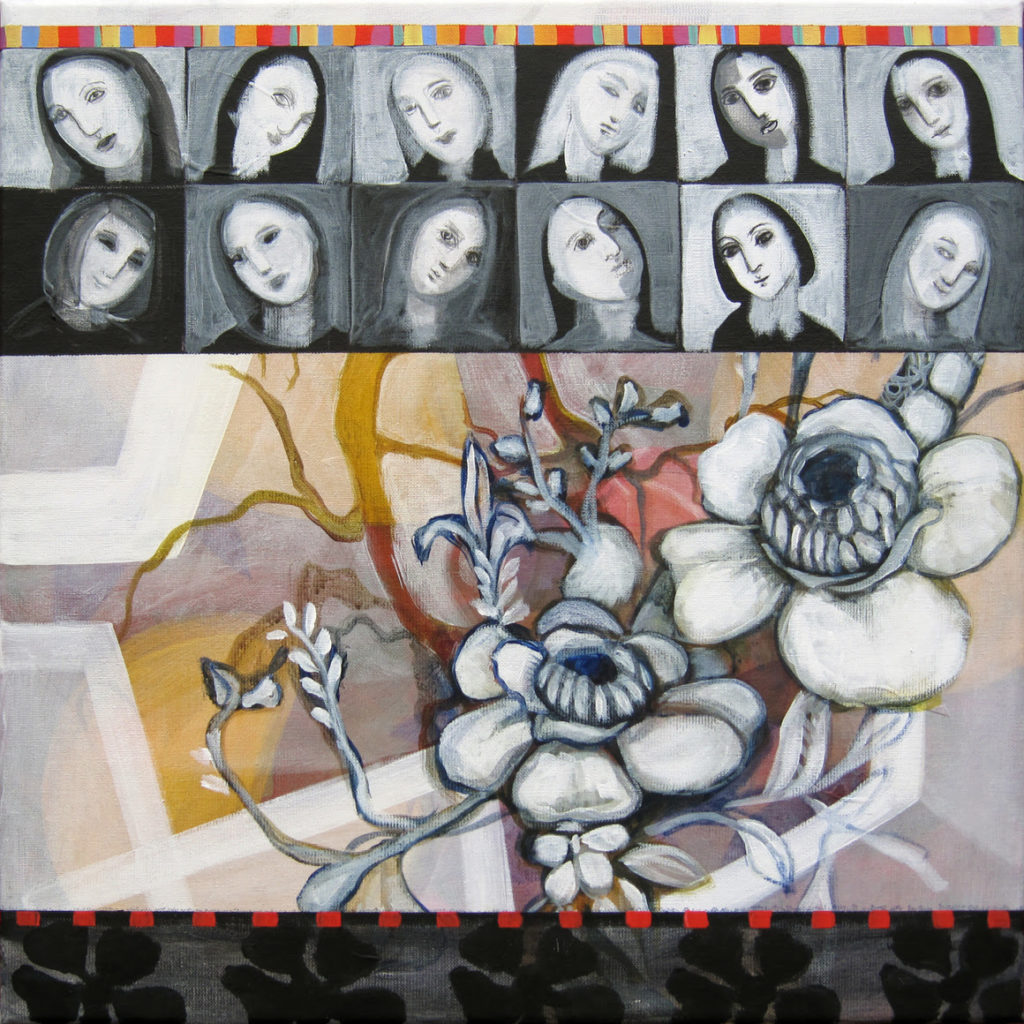
Artist & Exhibition: San Lundberg
Where: Galleri Bergman, Sturegatan
When: 24 March to 8 April
Acknowledged as Artist of the Year in 2000, San Lundberg is one of Sweden’s major portrayer of women through painting. The pottering she does in her series of great colours is well represented in Scandinavia and around the world, having been exhibited even in Milan and purchased for private and public collections across the globe; introducing to the planet at large the associations that define the essence within her oeuvre.
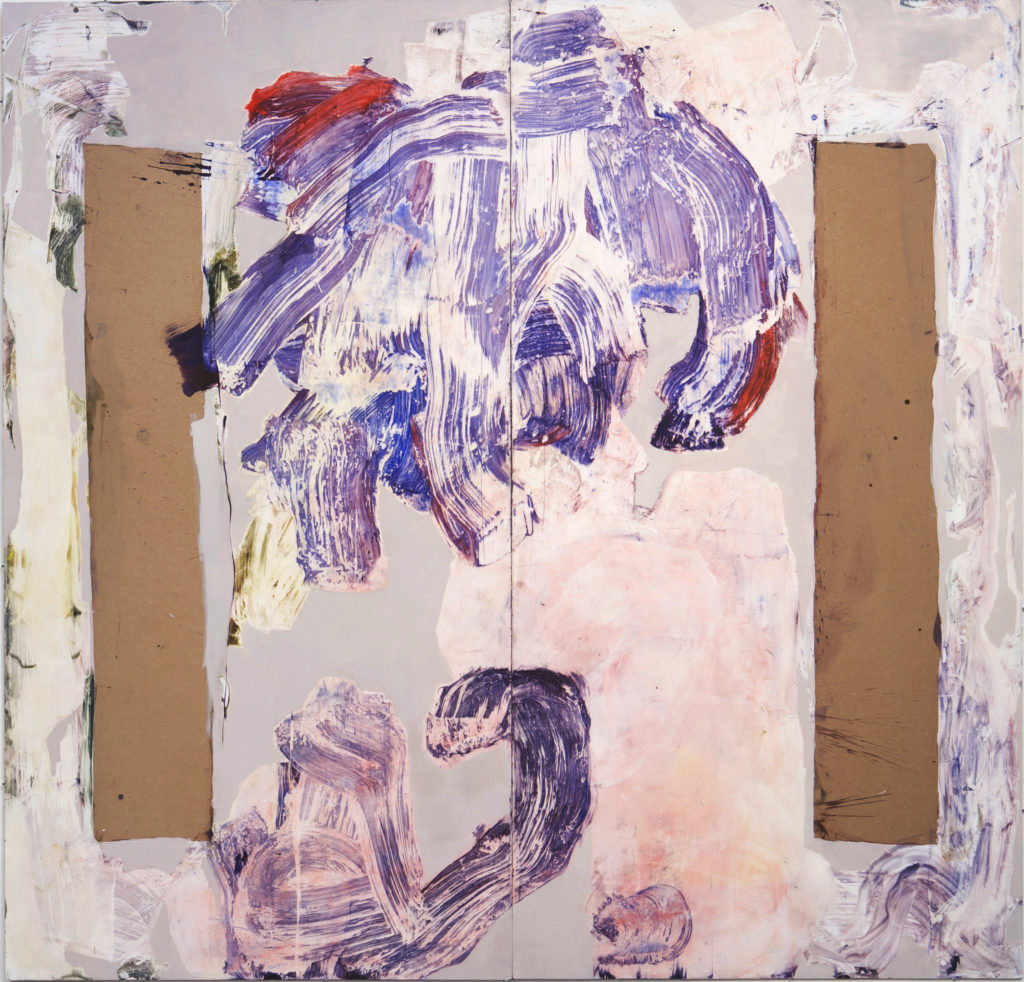
Artist: Dina Isæus-Berlin
Exhibition: Events At Point Zero
Where: YA!, Karlavägen 5
When: Till 8 April
Dina Isæus-Berlin’s practice is an ongoing investigation of artistic making. By means of large-scale bodily paintings, she aims at answering the question on what it means to drag something out from the existing. Painting then is her method of satisfactorily exploring this theme; with its hands-on recording of her actions and decisions along the way; with all movements having consequences, leaving traces she needs to relate and respond to.
Keeping careful track of this condition, she analyses its effects on her practice. When she paints, she tries to be at point zero, in a place without expectations, where she can encounter the Event where she surprises herself; getting relief within the process, like everything is starting anew, making space for new opportunities and points of departure.
Her Event can be mediated through her painting made without intellectual or theoretical labels. Then we are likely to have a wordless encounter with the Event as well as the piece as a whole; opening the possibility of replacing spoken words with observing – the words will come sooner or later but in the first encounter there is an opportunity to pause the constant flow of instructions and thoughts that dominate our lives; making room for a sense of space.
When of late, she allowed herself to step back and let a slower and more analytic way of relating to the surface be a way to care for, or to comment on, the Event; this rhythmic change becomes represented in the paintings as physical shapes; be it a rectangle or a straight line, with her use of rough materials exposed as straight forwardly unapologetic representations themselves.
”What are the ideal circumstances for the Event?” she thus asks herself. “To get there, you need to give up, be at point zero – with no future and no past. Then any direction is possible and the risks are no longer risks.”
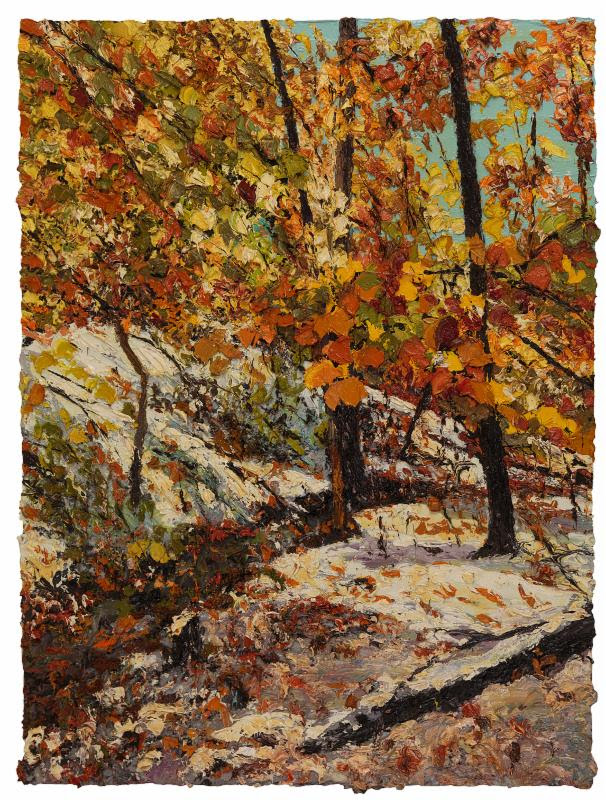
Artist: Robert Terry
Exhibition: The Landscape
Where: Bohman-Knäpper, Sturegatan 36A
When: 25 March to 23 April
Renowned for his cityscapes, landscapes and close-up portraitures of Abraham Lincoln, American Robert Terry has had numerous solo and groups exhibitions within his home country and in Sweden, the Netherlands and Greece.
The landscapes displayed in this exhibition exude the same artistic talent that Terry uses to instantaneously evoke from those of us viewing his mesmerizing Lincolns; compelling us to either desire to grace our walls with his artworks or to make the long journey to stand on the exact same spot from which he had painted his landscapes to glean the secret associations he makes within his artistic inspirations.
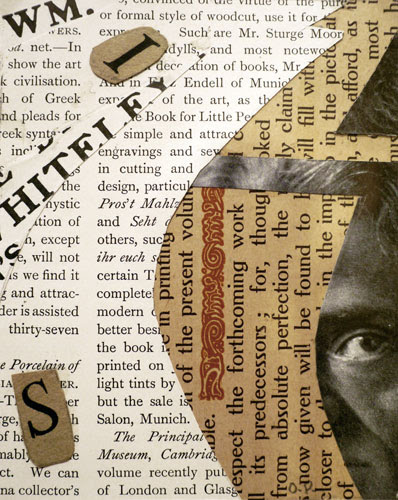
Artist: Fredrik Helander
Exhibition: Artist Unknown
Where: SKF / Konstnärshuset*, Smålandsgatan 7
When: Till 16 April
*Artist House
“Artist Unknown” culminates from Fredrik Helander initially cheaply buying competently executed abstract artwork signed as OP by an unknown artist at an auction; stimulating him to wonder: “How do we value art? What [impact] does a known identity [have]? In terms of who the artist was? How did he live and work? [Who] did [he] work for?”
These unanswered questions about OP drove Helander to further research into the unknown artist’s artistry, family, friendships, education and career. “The Artist Unknown” allows us to follow OP from birth in Malmö in 1899 until his disappearance from history in 1937 in Moscow.
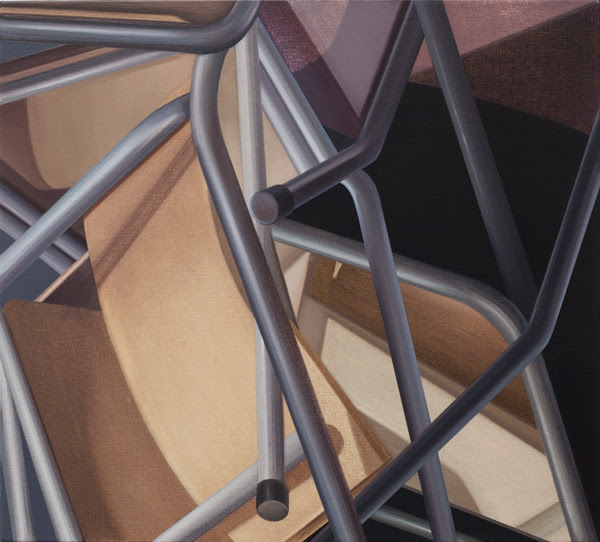
Artist: Carl Hammond
Exhibition: Stumble
Where: Galleri Magnus Karlsson, Fredsgatan 12
When: 25 March to 7 May
The exhibition comprises paintings which revisit a motif from Carl Hammoud’s oeuvre – the pile of chairs in his painting “The Protest” (2013); thanks to its loan for a feature film shoot in the summer of 2016, with the set designer ordering a real-life version of the painting’s subject matter to be built; inducing Hammond to use this adaptation as a model for the said artwork; featuring the central or sectional foci of a dramatic pile of chairs.
By repeating the subject in painting after painting, he seeks to reduce both the symbolism and the narrative structure with which his previous work are often associated; interweaving the separate works to form a sort of presumption, where we take what we see for granted, thus rendering the motif invisible as our focus shifts from an allegorical interpretation to the significance of the physical action – a candid account of the artistic conflict between process and production, which, in turn, raises questions about the uniqueness of painting.
Lingering on the same subject could thus, in a contemporary context, be an act of resistance, illustrating the unfashionably slow and repetitive nature of painting. And yet, herein lies a paradox, since duplication in itself is one way of defining mass production – bringing to mind Katherine Craster’s poem “The Centipede’s Dilemma” from 1871:
A centipede was happy – quite!
Until a toad in fun
Said, “Pray, which leg moves after which?”
This raised her doubts to such a pitch,
She fell exhausted in the ditch
Not knowing how to run.
Information & photo credits: The respective galleries.








